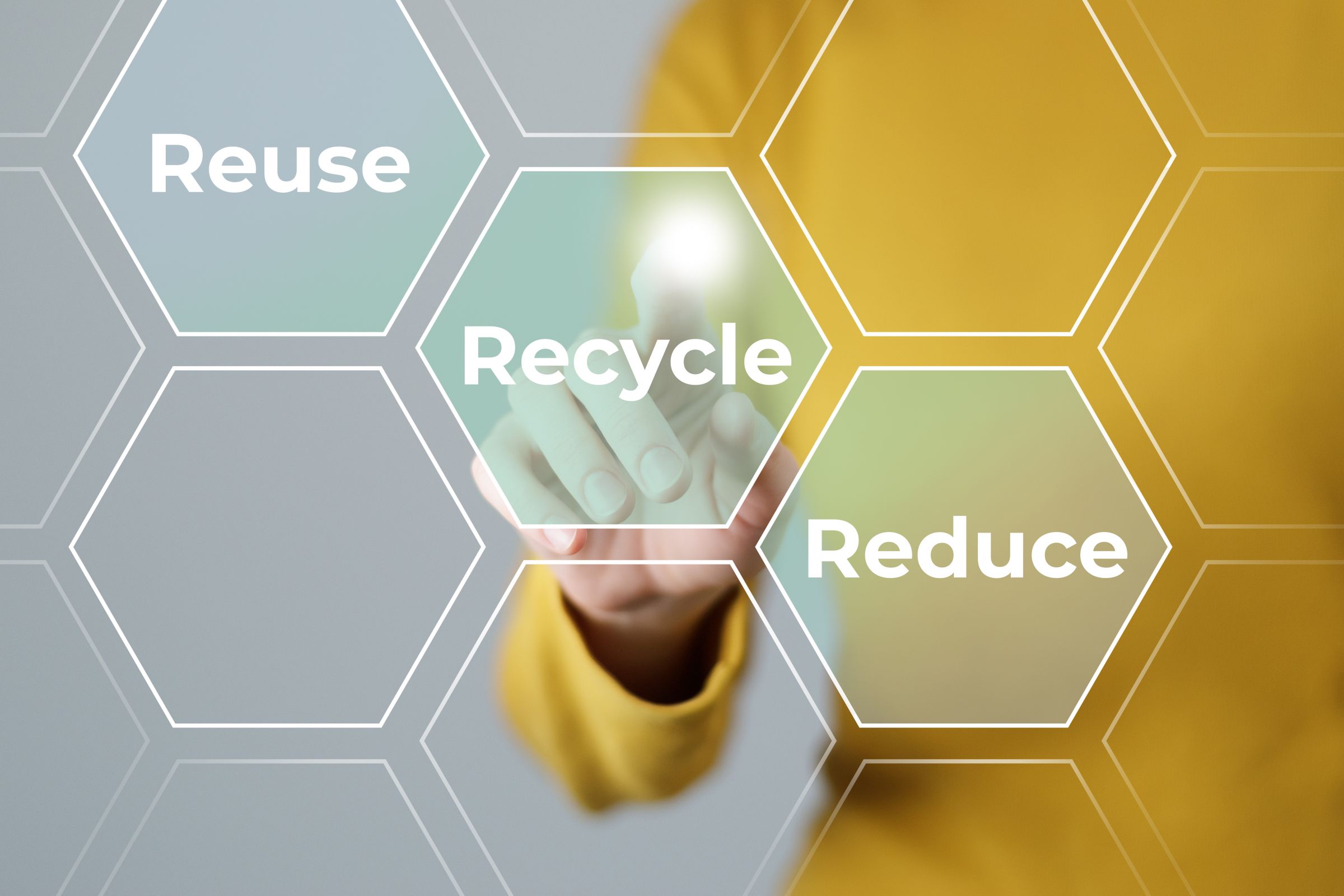
การจัดการวัสดุ
นโยบายการจัดการวัสดุ
Nam Liong Global เป็นผู้จัดหาวัตถุดิบจากซัพพลายเออร์ภายนอกเป็นหลัก. รายการจัดซื้อที่มีความสำคัญแปดรายการประกอบด้วยกาว (รวมถึงสารเติมแต่งสำหรับกาว ตัวแทนเคมี และวัตถุดิบยาง) เส้นด้ายพิเศษ พลาสติกโพลีเมอร์ เทปยึดแบบตะขอและห่วง ผ้า อุปกรณ์เสริมและวัสดุบรรจุภัณฑ์ เส้นใยพิเศษ และโฟมโพลีเมอร์. ปริมาณการจัดซื้อรวมของวัตถุดิบ โดยอิงจาก 80% แรกตามมูลค่าการจัดซื้อสำหรับปี 2024 มีจำนวน 5,521.7 ตันเมตริก ซึ่งในจำนวนนี้เป็นวัสดุที่สามารถนำกลับมาใช้ใหม่ได้ 32.08 ตันเมตริก.
ในอนาคต Nam Liong Global ยังคงมุ่งมั่นต่อปรัชญาที่ขับเคลื่อนด้วยความยั่งยืน โดยมุ่งเน้นการเพิ่มการจัดหาวัสดุที่สามารถรีไซเคิลได้และการปรับปรุงการรีไซเคิลและการใช้ซ้ำภายในองค์กร โดยมีวัตถุประสงค์เพื่อเพิ่มประสิทธิภาพการใช้ทรัพยากรและลดผลกระทบต่อสิ่งแวดล้อมในขณะที่ยังคงรักษาคุณภาพและความปลอดภัยของผลิตภัณฑ์. เราจะยังคงสำรวจวัสดุดิบทางเลือกที่เป็นมิตรกับสิ่งแวดล้อมซึ่งเป็นไปตามมาตรฐานสากล เช่น มาตรฐานการรีไซเคิลทั่วโลก (GRS) และการรับรองจากสภาการจัดการป่าไม้ (FSC) เพื่อพัฒนาห่วงโซ่อุปทานสีเขียวต่อไป. นอกจากนี้เราจะจัดการการจัดหาวัสดุและการประกอบวัสดุเพื่อให้แน่ใจว่าผลิตภัณฑ์ของเราเป็นไปตามมาตรฐานการอนุรักษ์สิ่งแวดล้อมระหว่างประเทศ กฎระเบียบ และคำสั่งต่าง ๆ ซึ่งจะช่วยเสริมสร้างความรับผิดชอบต่อสิ่งแวดล้อมของเราและก้าวไปสู่ความยั่งยืน.
SASB-CG-AA-440a.4 น้ำหนักการจัดซื้อวัสดุ (ตัน)
Material Procurement การจัดการ ตามมาตรฐาน SASB
| มาตรฐาน | SASB-CG-AA-440a.3 คำชี้แจงการดำเนินการ |
|---|---|
| 1. ปัจจัยด้านสิ่งแวดล้อมและ/หรือสังคมที่มีแนวโน้มจะคุกคามการจัดหา | ● ในแง่ของปัจจัยด้านสิ่งแวดล้อม, increasingly stringent regulations related to climate change and net zero carbon emissions are driving up the costs of raw material production and transportation. The over-exploitation of natural resources may result in issues such as land degradation and water scarcity, further leading to supply shortages, price fluctuations, and potential quality instability. In addition, the production of raw materials involves carbon emissions, wastewater discharge, chemical pollution, and high energy consumption, all of which pose long-term environmental impacts and consequential challenges to the Corporate’s operational sustainability. ● ในแง่ของปัจจัยด้านสังคม, geopolitical tensions and global economic instability have increased the uncertainty of international trade, thereby raising the complexity of procurement and supply chain management. Meanwhile, the textile industry in Taiwan faces challenges such as capacity relocation, the exit of small-scale processing plants, and an aging skilled workforce, resulting in increased difficulty in sourcing raw materials and affecting supply chain stability. In addition, supply chain operations may involve issues such as poor labor conditions, the use of child labor, and inadequate occupational safety, posing potential risks to both the Corporate’s fulfillment of social responsibilities and reputation. |
| 2. ความเสี่ยงทางธุรกิจและ/หรือโอกาสที่เกี่ยวข้องกับปัจจัยด้านสิ่งแวดล้อมและ/หรือสังคม | ● ในแง่ของความเสี่ยง, as the world moves toward net zero carbon emissions, the use and import of raw materials with high carbon emission may be restricted, resulting in increased compliance pressures and environmental costs for businesses. International markets placing growing emphasis on environmental, social, and governance (ESG) performance, and brand customers are imposing increasingly stringent requirements on green supply chains, non-compliance may lead to potential loss of orders. In addition, fluctuations in raw material prices and supply chain instability may affect production costs and operational efficiency, thereby increasing overall business risk. ● ในแง่ของโอกาส, the increasing global demand for environmentally friendly materials is driving the expansion of markets for recyclable, low-carbon, and bio-based materials. Businesses that comply with environmental regulations and hold sustainability certifications are more likely to gain favor with international brands, thereby enhancing their market competitiveness. In addition, developing and certifying green products can strengthen corporate image, create sustainable business opportunities, and enhance businesses’ capacity for sustainable development. |
| 3. กลยุทธ์การจัดการสำหรับการจัดการความเสี่ยงและโอกาสทางธุรกิจ | ● ในแง่ของการจัดการห่วงโซ่อุปทาน, Nam Liong Global collaborates with suppliers who comply with restricted substances standards and sources raw materials certified to third-party environmental or social standards to effectively mitigate potential environmental and health risks. These standards include the Global Recycled Standard (GRS), the Forest Stewardship Council (FSC®) certification, the OEKO-TEX®STANDARD 100, and the bluesign® standard. A supplier sustainability self-assessment mechanism is established to regularly evaluate their environmental and social conditions. In addition, inventory pressure is reduced and supply chain resilience strengthened through coordinated supplier material preparation and batched shipments, while in-house production lines are expanded to enhance autonomous manufacturing capabilities and quality control, thereby mitigating potential supply chain disruptions. ● ในแง่ของการจัดการวัสดุ, Nam Liong Global continues to promote waste recycling and reuse initiatives, including the reintroduction of in-house production scraps and the off-site pyrolysis oil refining of waste rubber, thereby improving material utilization efficiency and reducing waste disposal costs. In addition, the Corporate advances environmentally friendly processes and green materials through the expansion of the Eco-Family product series, focusing on the use of recycled and bio-based materials, as well as solvent-free or water-based processes, with the objective of effectively mitigating the environmental impact throughout the product lifecycle. ● Moving forward, Nam Liong Global remains committed to continuously conducting organization-wide greenhouse gas (GHG) inventories and product carbon footprint assessments, enhancing data-driven management capabilities to support our sustainability-oriented decision-making. The Corporate will also deepen strategies for green supply chains and material recycling and reuse, collaborating with suppliers and customers to advance sustainable operations. |
